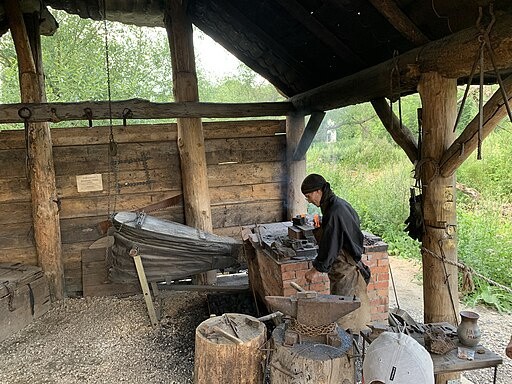An archaeology social enterprise named DigVentures has been investigating a downslope area from an ancient hillfort at Wittenham Clumps in South Oxfordshire. In 2021, the research team stumbled upon an extended Iron Age settlement dating from 400-100 B.C.

Elite and Rare Village
The discovery was made while working at the environmental charity Earth Trust headquarters near Abingdon, about 15 miles (24 kilometers) from Oxford and 50 miles (80 kilometers) from London. Excavations took place just down from Wittenham Clumps, including Castle Hill, a scheduled monument, and an ancient hill fort. Aside from the ancient village, the team also came across the foundations of a later Roman villa.
This settlement includes a cluster of roundhouses and an Iron Age pantry. There was also evidence of ritual or ceremonial activities, like animal burials, as indicated by the remains of a small Roman-era pet dog.
READ ALSO : Iron Age Comb Made From Human Skull Unearthed in England May Have Served as an Amulet, Researchers Say
Forged in History
The remarkable find was accompanied by the discovery of a blacksmith workshop, which could be one of the oldest such finds in the U.K. It was complete with bellows protectors and the small bits of metal that flew off as the hot iron was hammered into shape.
Radiocarbon tests date the blacksmith workshop between 770 B.C. and 515 B.C. This is considered the earliest days of ironworking in England. From about 800 B.C., the iron forging industry for tools and weapons became widespread in the British Isles. In fact, the name 'Iron Age" was taken from the mastery of this metal.
Archaeologists reported that the early dates and the evidence of metallurgy completely blew them away. They noted that this discovery was not an ordinary blacksmith workshop but a highly skilled manufacturer of significant and high-end iron artifacts, such as swords and chariot wheels.
The findings include the footprint of the blacksmith building and other internal structures, with evidence of a specialized hearth and iron bar from which the artifacts were made. They also identified a hammer scale and waste metal or slag.
The experts also found an intact tuyere, which would have sent air into the heart while acting as a buffer to protect the bellows from the extreme heat of the flames. The discovery of a specialist tuyere indicates that this was much more likely to have been a serious operation by an elite, highly skilled, or master blacksmith. According to archaeometallurgical specialist Gerry McDonnell, the intact tuyere was one of the few known examples in Europe.
Most of the artifacts made in the Iron Age were small and could be made with a small-scale hearth. On the other hand, larger hearths, like those found at the excavation site, would have taken more skill and resources to control.
According to DigVentures site director Nat Jackson, they got almost every component of the blacksmith workshop, and the only thing they have not found is the tools. He noted that the range of evidence allows them to peer back in time and investigate what could have been one of Britain's earliest master blacksmiths at work.
RELATED ARTICLE : Archeology Team Unearthed 2000-Year-Old Remains at the Iron Age Site Duropolis in Dorset
Check out more news and information on the Iron Age in Science Times.
© 2025 ScienceTimes.com All rights reserved. Do not reproduce without permission. The window to the world of Science Times.











